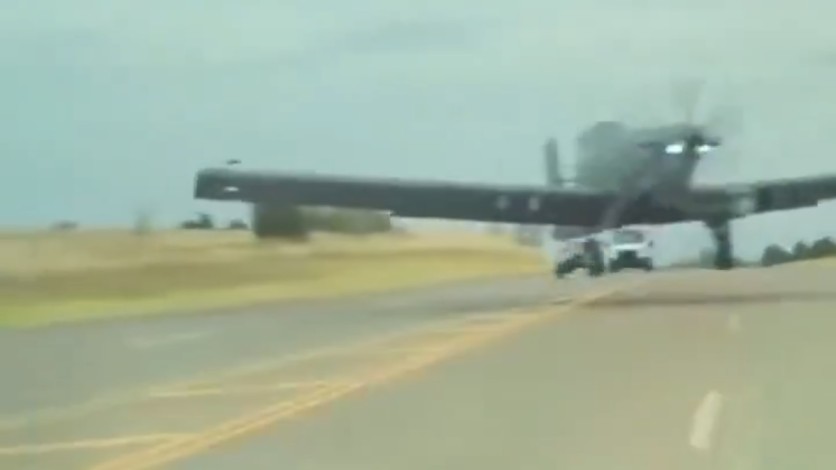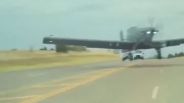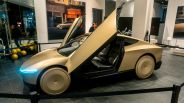
A widely circulated video showing a Tesla allegedly avoiding a small aircraft landing on a public road has sparked online debate, with many attributing the manoeuvre to Tesla's Full Self-Driving (FSD) technology. However, the driver involved has since clarified that he was in manual control at the time, dispelling claims that the vehicle's autonomous system was responsible.
Incident in Oklahoma Sparks Social Media Frenzy
The incident occurred in Oklahoma, where a light aircraft made an emergency landing on a highway. The footage of the event was shared extensively across X (formerly Twitter), with some users praising Tesla's self-driving capabilities. One popular popular post claimed: 'WOW! Tesla full self-driving dodges a freaking plane falling out of the sky! @Tesla FSD for the win! @elonmusk.' This post, and others like it, implied that Tesla's autonomous systems had independently prevented a collision.
Driver Clarifies Control and Debunks Autonomous Claims
Despite the viral hype, the driver has clarified that he was manually steering the vehicle when the plane descended. No statement from Tesla has suggested that FSD was engaged during the manoeuvre. The driver's account confirms that he swerved to avoid the plane himself, rather than relying on autonomous systems.
This clarification underscores a critical distinction: the video does not demonstrate Tesla's Full Self-Driving system preventing a crash. Instead, it captures a human driver reacting in real-time to an emergency.
The Danger of Misattribution and Misinformation
While the video continues to circulate as supposed evidence of Tesla's autonomous prowess, experts warn against such misattributions. Critics argue that these narratives contribute to a dangerous misunderstanding of what driver assistance systems can do. Tesla's FSD package is not an approved autonomous system; it still requires constant human supervision.
Regulators in both the US and UK have emphasised that Tesla's driver-assistance features are classified as Level 2 automation, meaning the human driver must remain fully engaged and ready to take control at any moment. Past incidents—including fatal crashes where drivers were reportedly over-reliant on Tesla's systems—highlight the risks of overestimating vehicle autonomy.
Tesla Full Self-Driving dodges a plane making an emergency landing 🤯 https://t.co/Bcu7d90UqX pic.twitter.com/XBiWWBGdwq
— Nic Cruz Patane (@niccruzpatane) October 25, 2025
Legal and Safety Concerns
Tesla's marketing of Autopilot and FSD has faced scrutiny, with investigations into how the company portrays its driver-assistance features. Notably, a 2018 fatal crash in California, as covered by The Guardian, involved a Tesla driver playing a game on his phone while Autopilot was active, ultimately crashing into a barrier. Such incidents have intensified calls for clearer communication from manufacturers about the limitations of these systems.
No Injuries, but Public Perception Matters
In this recent incident, no injuries were reported. The driver's quick reaction prevented impact, but the online narrative has largely focused on Tesla's supposed technological heroism, rather than the human action taken in the moment. The driver has explicitly stated that the vehicle's software did not make the decision; it was his own reflexes that avoided the crash.
The Broader Issue: Misinformation and Perception
The incident highlights the widening gap between public perception and the actual capabilities of current driver-assist systems. It raises important questions about how such events are framed online before all facts are fully verified, potentially leading to inflated expectations about vehicle autonomy.
As autonomous vehicle technology continues to evolve, clear communication and responsible reporting are crucial to ensure public understanding aligns with reality. Misleading viral clips, whether intentional or not, risk fostering complacency and overtrust in systems that still require vigilant human oversight.
Originally published on IBTimes UK
© Copyright IBTimes 2025. All rights reserved.




